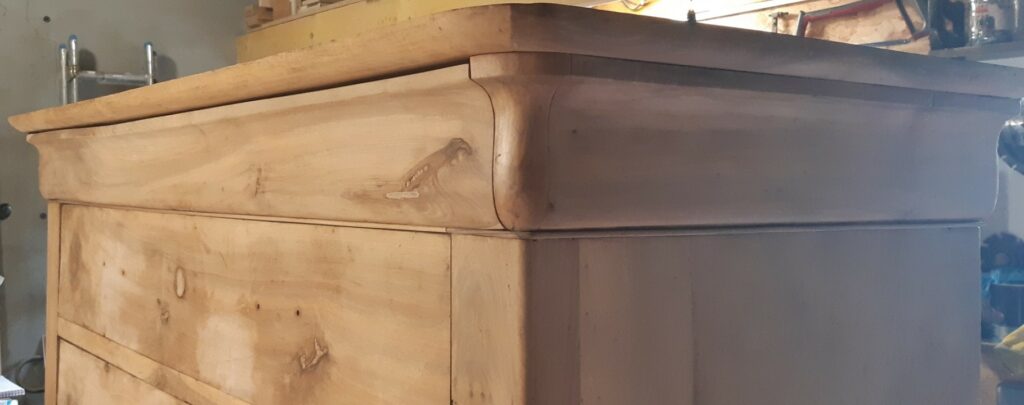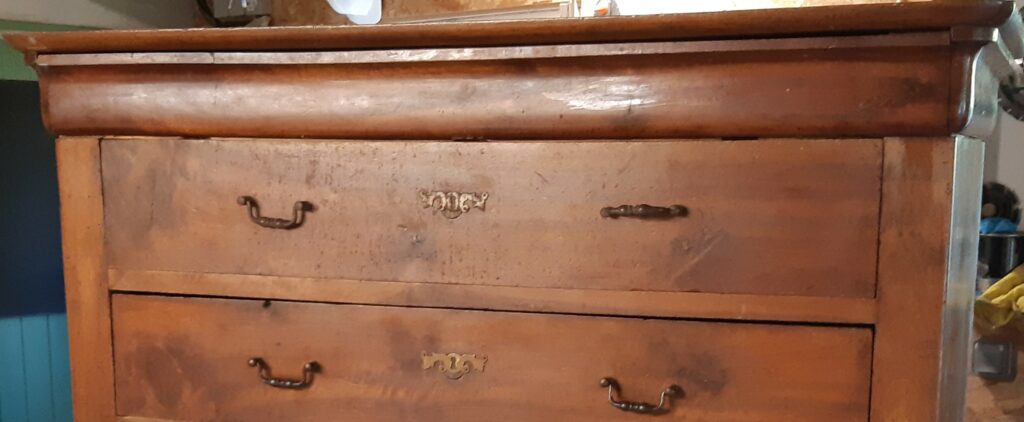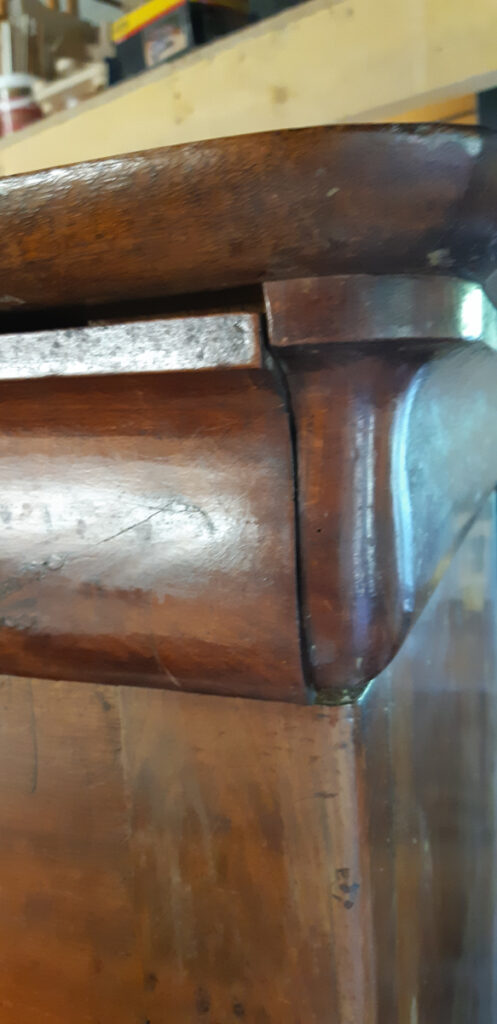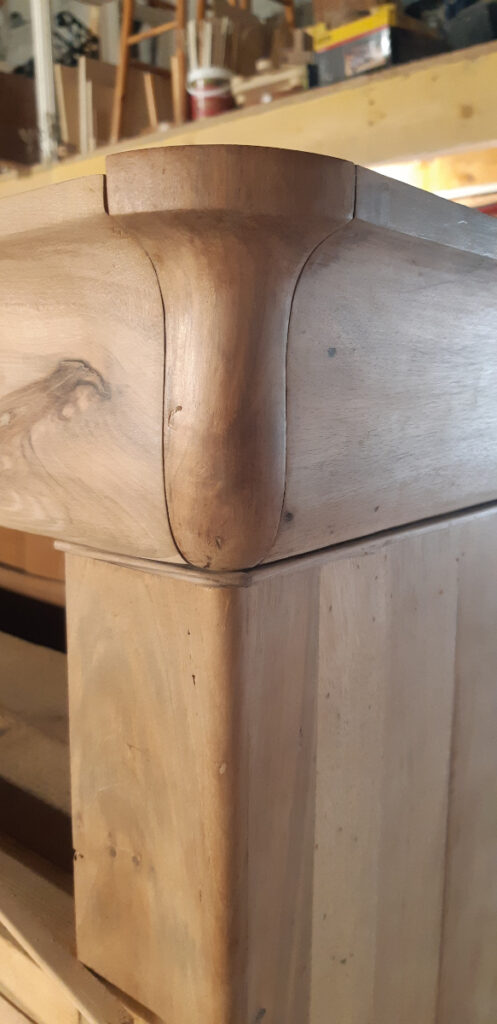Looking Back at a Step in the Restoration of This Chest of Drawers, bringing new life to a discreet yet essential detail.

A discreet and refined opening mechanism.
Among the key stages in the restoration of this walnut Louis-Philippe–style chest of drawers, the work on the under-marble drawer 1 held a special place for me.
True to the clean aesthetic of the 19th century, this drawer has no hardware on its front. To open it, one must first slightly open the drawer just below it, then slip their fingers under its front to pull it out. A simple, almost secret gesture that embodies the functional refinement of the cabinetmakers of the time.
An almost vanished moulding strip.
When I began work, I noticed that the small moulding running along the top side rails and continuing beneath the drawer was entirely missing.
Only about fifteen centimetres remained; the other 90% had disappeared over time and with use. This gap disrupted the harmony of the lines and diminished the character of the piece, as I consider this moulding essential to its visual balance.
Faithful reproduction and respect for traditional techniques.
I set out to reproduce the missing section identically, choosing walnut whose grain and colour would perfectly match the original wood.
I carefully shaped the profile, then adjusted and fixed it in place in keeping with traditional techniques.
Conclusion.
Beyond a simple repair, this step allowed me to restore the aesthetic and functional integrity of the chest of drawers, while preserving that discreet little opening ritual that gives the under-marble drawer all its charm.




- “Under-marble drawer” is a term I personally use to refer to a drawer positioned directly beneath the marble top of a chest of drawers. ↩︎
